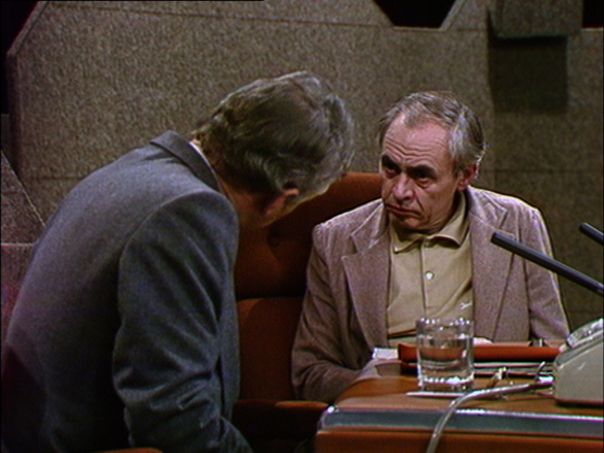Videos Critical and Clinical
A look at the "Critique and Clinic" exhibition in the Berlinale Forum Expanded.

Luke Fowler’s ALL DIVIDED SELVES
If we read the title of “Critique and Clinic“, the Berlinale Forum Expanded exhibition at Kunstsäle Berlin, as echoing Deleuze‘s “Essays Critical and Clinical,” we can see why experimental film and video might be a way for filmmakers to critique and clinically approach the problems of civilization.
Deleuze analyses how several writers mould the rules of the dominant language, as well as rational discourse in general, how they “schizophrenise” it in order to perform an internal critique of dominant modes of social life. We could translate this concept to film to see how video-makers twist the dominant rules of narration through moving images to create socially critical discourse. Ken Jacobs demonstrates how a fairly abstract visual language can be combined with other tools to shape a politically engaged meditation: his SEEKING THE MONKEY KING (US) consists of animated stereoscopic images adding up to a morphing, shiny landscape, into which the viewer can project his or her own visual associations spurred by the musical score (made of quotations from pre-war thrillers) and the author’s own textual commentary on his country.
Meanwhile Eline McGeorge’s A WORLD OF OUR OWN (Norway/GB) perhaps most clearly testifies to this subversive “schizophrenising” of filmic language: the five-minute sensory overlapping of found footage, several soundtracks, and visual and voice-over semi-quotations (from Virginia Woolf, Maya Deren, Rosa Luxemburg and others) engages the viewer into associatively tying the pieces of the video-text together into a meditation on a female revolutionary subject. It’s as if McGeorge is not quite satisfied with “a room of her own”, now wanting to create “A World of Our Own.”
The revolutionary nature of what is perceived by society as insanity (as that which disrupts the normal rational way of functioning) has been advocated throughout Deleuze’s work; a few works in the exhibition directly address this point. THERE IS SOMETHING IN THE AIR explores the escape of Indian women from a strict moralistic and patriarchal society into insanity through the contrast between voice-over first-person narration of the “diseased” women and associative images; meanwhile Luke Fowler’s ALL DIVIDED SELVES perhaps best summarizes the central idea of the exhibition read through Deleuze’s work: his documentary, composed of found footage, investigates the revolutionary work of psychiatrist RD Laing in the 1960s, who advanced the then-brave hypotheses that those deemed insane are just unable to fit into the dominant socio-political structure and are thus forced to find psychologically eruptive means of escape.
This inspirational exhibition takes the idea of exploring the revolutionary potential of “deviant” psychologies or artistic forms seriously, exploring the formal possibilities of the video medium to create cuts into the normalized way in which we perceive our world and society.


301 Moved Permanently